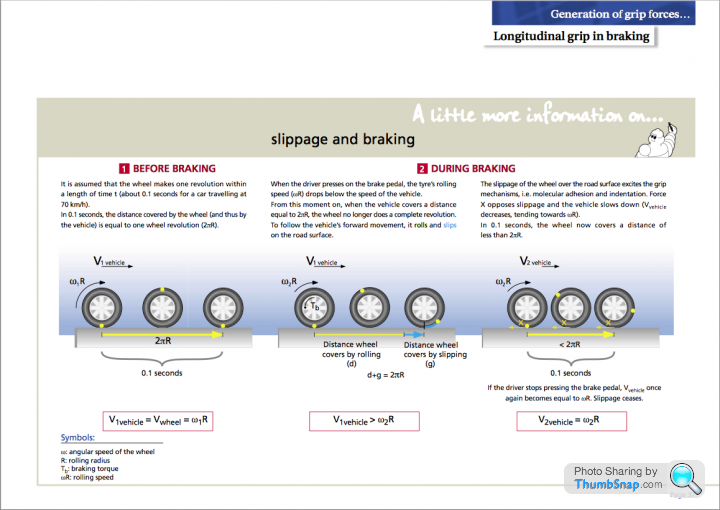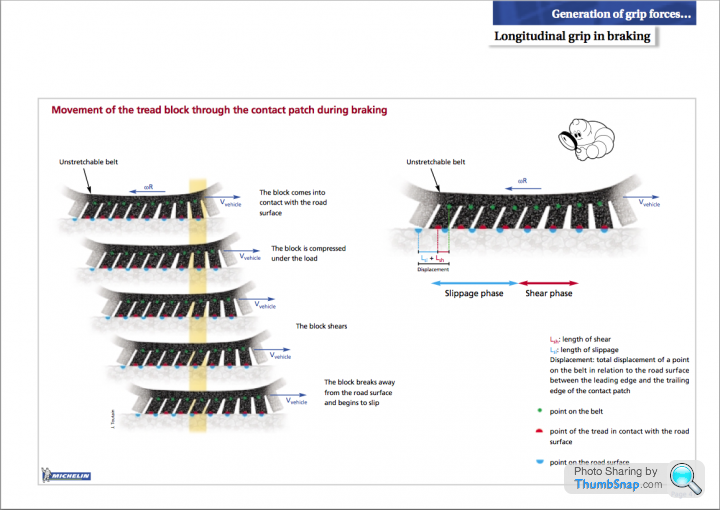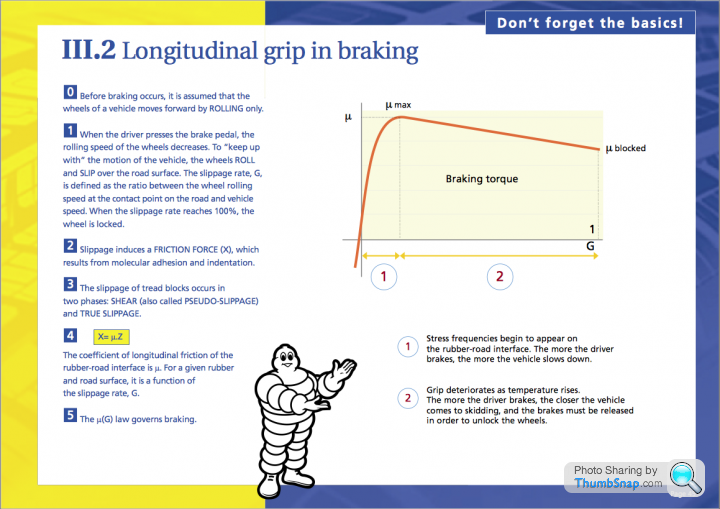Carbon Brakes - walk away or worth it?
Discussion
SHIFTY said:
What he said above, I completed the Porsche experience day in a Boxster with Carbon Brakes, questioned the price of them so had a go in a Boxster without and I thought the brakes had failed that’s how good the Carbons are.
No good to my bank balance as now a must have option on a Boxster GTS.
I think you've got it 100% right there, you have tried both and decided what you prefer and I'd suggest anyone else thinking about them should do exactly what you did try a real world back to back test.No good to my bank balance as now a must have option on a Boxster GTS.
mrdemon said:
that's more because of the risk of chipping a disk in the gravel not because of performance.
do don't see F1 teams switching back to steels do you ? not that they are the same, but if steels were the best F1 would use them.
F1 use Carbon-Carbon discs (ie carbon fibre reinforced graphite) whereas road cars use Carbon-Silicon (carbon fibre reinforced silicon carbide), hence their name, ceramics. They are not the same thing at all.do don't see F1 teams switching back to steels do you ? not that they are the same, but if steels were the best F1 would use them.
Even so, F1 do this to make use of the better thermal high temp stability of C-C compared to iron discs, meaning they require less cooling and consequently less negative effect on the car's aerodynamics. Lower unsprung weight is a useful byproduct, but better stopping power is not. In 1999 Alex Zanardi experimented with iron brakes in his F1 Williams when he was struggling with the carbon brakes. In his first race with them he actually out-qualified his teammate, Ralf Schumacher, who was otherwise significantly outperforming him that season. The only real difference noted by Zanardi between Carbon and Iron discs was in the pedal feel, not the performance.
fioran0 said:
interestingly, given the heat energy, Q , is expressed using the formula:
Q = m Cp dT where m=mass (i.e. density x volume), Cp = specific heat capacity and dT = change in temperature
it should be obvious that mass of a brake disc has a direct relationship to its ability to absorb heat.
Carbon ceramic brakes have a Cp of around 1,350 J/kgK, cast iron brakes have a Cp of around 600 J/KgK however the density of carbon ceramic is 2.35 g/cm^3 while for cast iron it is 7.25 g/cm^3
This leads to carbon ceramic brakes having a lower volumetric heat capacity versus iron brakes. 3,173x10^3 J/Kcm^3 versus 4,350x10^3 J/Kcm^3
This is the technical reason why carbon ceramic brakes are larger than equivalent iron brakes. They are disadvantaged in terms of their ability relative to heat storage/temperature as a direct consequence of their lack of mass.
But if you are working your brakes hard you don't want to store the heat in the thermal mass of the disc --- you want to dispose of the heat.Q = m Cp dT where m=mass (i.e. density x volume), Cp = specific heat capacity and dT = change in temperature
it should be obvious that mass of a brake disc has a direct relationship to its ability to absorb heat.
Carbon ceramic brakes have a Cp of around 1,350 J/kgK, cast iron brakes have a Cp of around 600 J/KgK however the density of carbon ceramic is 2.35 g/cm^3 while for cast iron it is 7.25 g/cm^3
This leads to carbon ceramic brakes having a lower volumetric heat capacity versus iron brakes. 3,173x10^3 J/Kcm^3 versus 4,350x10^3 J/Kcm^3
This is the technical reason why carbon ceramic brakes are larger than equivalent iron brakes. They are disadvantaged in terms of their ability relative to heat storage/temperature as a direct consequence of their lack of mass.
The relative heat transfer from the disc is the fourth power of the temperature difference, hence the PCCB's running to a higher temperature will cool significantly faster that steel brakes running to lower temperatures ...
Hence also the need to replace PCCB pads significantly earlier than steels in order for the pad to insulate the caliper ...
Its about the dT.
Q is provided by the kinetic energy, the mass and Cp are fixed. So under braking temp changes. As a result the pccb will see a larger rise in temp for the same energy. This requires more cooling to reduce this increased temp. There are various ways to address this.
But PCCB also have a critical upper temp limit since the carbon oxidises at around 750 deg making it even more important.
Did you mean to say radiative heat transfer? Its a 4th power equation (though most usually a power of 3 when calculating). There's also conductive and convective heat transfer occurring.
With larger dT, the rate of joules transferred per second as heat loss is larger but as dT reduces the rate reduces too. Once the dT is the same as steel the rates of heat loss will be the same.
Specific heat capacity is about the amount of energy required to cause a change in temp. The lower the figure, the less energy needed to cause temp to rise.
Q is provided by the kinetic energy, the mass and Cp are fixed. So under braking temp changes. As a result the pccb will see a larger rise in temp for the same energy. This requires more cooling to reduce this increased temp. There are various ways to address this.
But PCCB also have a critical upper temp limit since the carbon oxidises at around 750 deg making it even more important.
Did you mean to say radiative heat transfer? Its a 4th power equation (though most usually a power of 3 when calculating). There's also conductive and convective heat transfer occurring.
With larger dT, the rate of joules transferred per second as heat loss is larger but as dT reduces the rate reduces too. Once the dT is the same as steel the rates of heat loss will be the same.
Specific heat capacity is about the amount of energy required to cause a change in temp. The lower the figure, the less energy needed to cause temp to rise.
Edited by fioran0 on Friday 23 May 00:33
fioran0 said:
Its about the dT.
Q is provided by the kinetic energy, the mass and Cp are fixed. So under braking temp changes. As a result the pccb will see a larger rise in temp for the same energy. This requires more cooling to reduce this increased temp. There are various ways to address this.
But PCCB also have a critical upper temp limit since the carbon oxidises at around 750 deg making it even more important.
Did you mean to say radiative heat transfer? Its a 4th power equation (though most usually a power of 3 when calculating). There's also conductive and convective heat transfer occurring.
With larger dT, the rate of joules transferred per second as heat loss is larger but as dT reduces the rate reduces too. Once the dT is the same as steel the rates of heat loss will be the same.
Specific heat capacity is about the amount of energy required to cause a change in temp. The lower the figure, the less energy needed to cause temp to rise.
I suppose the high cP is also works the other way re cooling and why PCCB brakes given the compensating disc size and calliper size seems to be more fade resistance. Q is provided by the kinetic energy, the mass and Cp are fixed. So under braking temp changes. As a result the pccb will see a larger rise in temp for the same energy. This requires more cooling to reduce this increased temp. There are various ways to address this.
But PCCB also have a critical upper temp limit since the carbon oxidises at around 750 deg making it even more important.
Did you mean to say radiative heat transfer? Its a 4th power equation (though most usually a power of 3 when calculating). There's also conductive and convective heat transfer occurring.
With larger dT, the rate of joules transferred per second as heat loss is larger but as dT reduces the rate reduces too. Once the dT is the same as steel the rates of heat loss will be the same.
Specific heat capacity is about the amount of energy required to cause a change in temp. The lower the figure, the less energy needed to cause temp to rise.
Edited by fioran0 on Friday 23 May 00:33
On a rather less technical level, non GT cars have rather mushy brakes that are less confidence inspiring on track versus the PCCB equipped cars, why do you think that is so and how would you fix the feel?
PCCB def cool faster than steel
do a cool down lap and the PCCB disk will be cooler after a cool down lap than the steel disk.
I am always amazed after a cool down lap my disk is down to very low temps.
the performance is night and day in a Cayman end of, no amount of numbers (bulls t) can show what happens in the real world in these two cars.
t) can show what happens in the real world in these two cars.
And as I run both at the same time, no one can say other wise, it's getting a bit daft, but I put up a wager and the guys who shout the most did not take it up.
It's top Trolling by the normal people time after time. (woops I did say I would not post, but I am waiting for my coffee to arrive)
do a cool down lap and the PCCB disk will be cooler after a cool down lap than the steel disk.
I am always amazed after a cool down lap my disk is down to very low temps.
the performance is night and day in a Cayman end of, no amount of numbers (bulls
 t) can show what happens in the real world in these two cars.
t) can show what happens in the real world in these two cars.And as I run both at the same time, no one can say other wise, it's getting a bit daft, but I put up a wager and the guys who shout the most did not take it up.
It's top Trolling by the normal people time after time. (woops I did say I would not post, but I am waiting for my coffee to arrive)
HokumPokum said:
I suppose the high cP is also works the other way re cooling and why PCCB brakes given the compensating disc size and calliper size seems to be more fade resistance.
Absolutely. For a given Q out (heat loss) the temp change will also be larger. However the Qin is provided by kinetic energy. Qout is via a combination of conductive,convective and radiative heat transfers. The question will be whether Qout is large enough to allow the temp to fall back down to original level before the next braking event. This is complex since it involves surrounding temperature and materials and everything is continually changing. External cooling and ventilation become important too since higher temps will cause surrounding temps to become higher. It's very complex but would be interesting to run some models on. But this is also a mile away from the original direction which was stopping distance. It's empirically prove able that the 6 pot offers minimal increased braking force over the 4 pot and that brake pad friction coefficient increases can easily reverse this. While it is also understood that stopping distance is governed by tyre friction. All braking eventually translates into an interaction between the rubber and the road with slipping taking place (even when tyre is still turning) and it's this that stops the car not the brakes (think skidding or stopping on ice if you are struggling, brake function is not impeded in any way but actual stopping is).
For fade/heat rejection size matters absolutely but mechanisms are complex. See the info earlier about stopping distances over repeated braking tests with a pccb and a non pccb carrera. It would be interesting to know the time gap between runs there for example and how reducing this would change the results.
This is not a PCCB bash, I firmly believe choice is a good thing and a PCCB offers benefits that are real.
Edited by fioran0 on Friday 23 May 12:42
HokumPokum said:
On a rather less technical level, non GT cars have rather mushy brakes that are less confidence inspiring on track versus the PCCB equipped cars, why do you think that is so and how would you fix the feel?
Brake master cylinder and brake booster. The regular cars are set up with greater boost factor and a smaller MC. This requires less effort and a bit more pedal length to apply the same brake line pressure. Changing the booster and or changing the brake master cylinder will require more effort from the driver with a shorter pedal length to achieve the system pressure. If you were to run a GT3 master cylinder, which I presume will be the biggest size, you would need to press harder and with less pedal travel to stop.
I run smaller MCs on the 997 cup to give a touch longer pedal and a touch less effort. I prefer the modulation that way and it's easier over a long run in terms of fatigue.
Always just the factory part metal brake rotors on both 996 and 997 cup. My project 996 car is also running metal brakes, though the fancy brembo racing pieces. That car also runs no ABS, no power booster etc. It uses RSR/997 cup stuff with dual master cylinders, cockpit adjustable bias etc.
mrdemon said:
the performance is night and day in a Cayman end of, no amount of numbers (expletive deleted) can show what happens in the real world in these two cars.
ensuing might be useful for youhttp://www.theflatearthsociety.org/tiki/tiki-index...
(the signal to noise ratio..rather does plumb the depths...)



I am surprised nobody has mentioned yet: the standard brakes are rubbish but its not difficult or expensive to make them much better. All you need to do is replace the standard flex hoses with braided hoses (about 60 for a set of 4) & replace the standard pads, which I suspect are made from wood, with harder pads. This makes a huge difference; when you touch the middle pedal, you no longer have to wait for something to happen the car slows down immediately.
My experience is with 987s (we have two in our household at the moment) but I suppose the new cars are just as bad (or worse) than the old ones.
& back to the original question: I would have loved to have found a car with PCCB when I was looking for mine.
My experience is with 987s (we have two in our household at the moment) but I suppose the new cars are just as bad (or worse) than the old ones.
& back to the original question: I would have loved to have found a car with PCCB when I was looking for mine.
"All braking eventually translates into an interaction between the rubber and the road with slipping taking place (even when tyre is still turning) and it's this that stops the car not the brakes (think skidding or stopping on ice if you are struggling, brake function is not impeded in any way but actual stopping is)."
I did lol at this.
I did lol at this.
mrdemon said:
"All braking eventually translates into an interaction between the rubber and the road with slipping taking place (even when tyre is still turning) and it's this that stops the car not the brakes (think skidding or stopping on ice if you are struggling, brake function is not impeded in any way but actual stopping is)."
I did lol at this.
I bet you did, meanwhile.......I did lol at this.

Gassing Station | Boxster/Cayman | Top of Page | What's New | My Stuff







